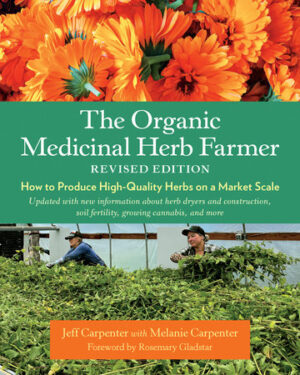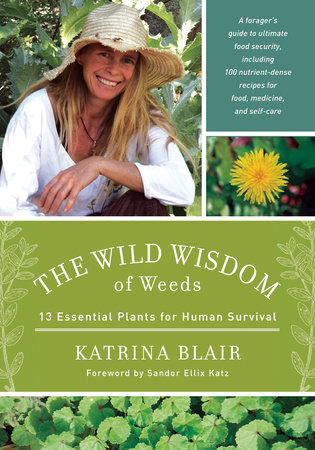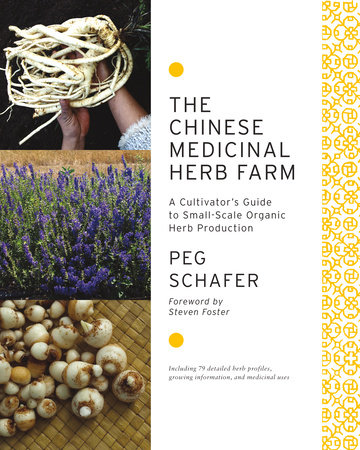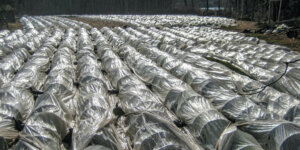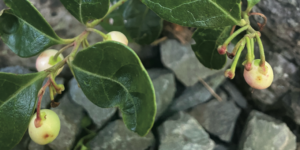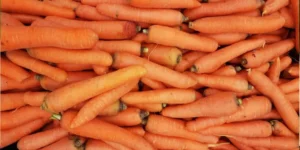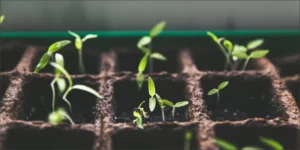About Thyme: Growing, Harvesting, and Drying Thyme
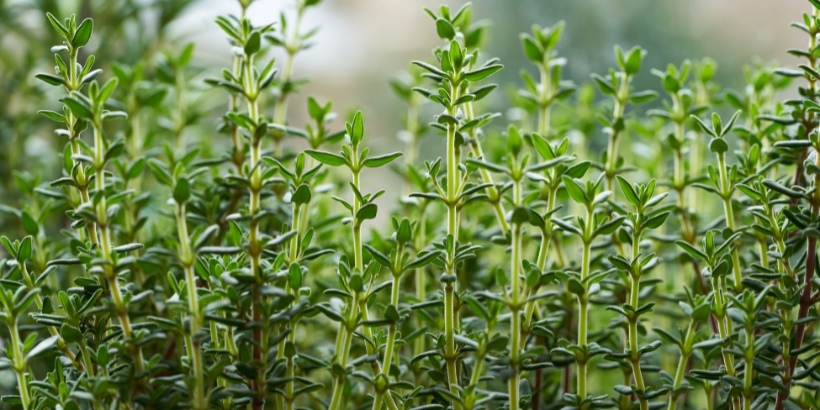
It’s about time we talk about thyme! Thyme, a medicinal herb and a flavorful addition to meals, is easy to grow and harvest in almost any condition. Follow these tips to get started growing thyme in your backyard!
The following is an excerpt from The Organic Medicinal Herb Farmer, Revised Edition by Jeff and Melanie Carpenter. It has been adapted for the web.
Thyme, German Winter (Thymus Vulgaris)
Thyme is a woody perennial that is hardy in USDA zones 5 to 9.
It has a rich history of use and is native to Europe, North Africa, and Asia. Thyme is a mint and a member of the Lamiaceae family. It is a short, bushy shrub that has rough, woody branches and grows 6 to 12 inches tall. The small leaves of thyme are narrow, lance shaped, and deep green in color.
Thyme foliage is extremely fragrant and contains a valuable phenol called thymol that has antiseptic properties. Thyme flowers consist of clusters of white and purplish blossoms that are located at the end of the branches.
Growing Conditions
Thyme is a sturdy plant that likes to grow in full sun in well-drained, loamy soil. It can also grow at higher elevations and can overwinter in cold climates if mulched well. Overall, thyme is a low-maintenance plant, provided it is not grown in wet, weedy areas.
Thyme Propagation
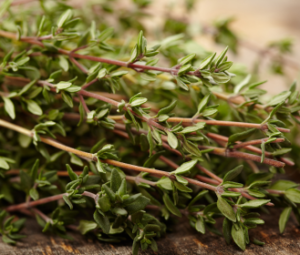
Transplant it into clean, weed-free beds and consider using mulches to reduce weed pressure. Recommended plant spacing for thyme is 12 inches between plants, in triple rows with 14 inches between rows within the bed.
Planting Considerations
Thyme may be diminutive in size, but it has hearty, delightful aromatics and strong healing properties. We like to plant thyme next to other low-growing perennials such as oregano, sage, and lavender. The plants have a genuine affinity for one another and do not tend to crowd each other out.
It is also beloved by bees and other pollinators and is a great selection for gardens located near hives. Not only will it contribute to tasty honey, but the antimicrobial components of the plant are thought to be beneficial to the health of the insects.
Thyme Harvesting Specifications
We harvest thyme as it begins to flower in late summer. This is when the volatile oils are at their highest levels and the plant has reached the apex of its growth cycle for the season. Mechanical harvest is challenging due to the low-growing, woody nature of the plants.
We have found it easiest to harvest using very sharp pruners rather than trying to saw through the woody stems with field knives, which can be time consuming and hard on the arms. When harvesting be sure to leave 2 to 3 inches of the plant intact to allow for regeneration and to help the plant overwinter.
Post-Harvest and Drying Considerations
Dry thyme at temperatures of 100 to 120°F (38– 49°C) in order to maintain the delicate aromatic compounds. It is best to keep thyme out of direct light to help maintain vibrant color and medicinal quality.
In good drying conditions, it should dry in a couple of days. When dry, the leaves will easily rub off from the stems. Run stalks over 1/4-inch stainless steel mesh and separate the leaves from the stems.
Recommended Reads
Recent Articles
These snacks might be too darn cute to take a bite of! Brighten up snack time this winter using fruits and veggies we all know and love.
Read MoreWant to grow year-round, but a greenhouse feels like a big investment? When it comes to cost and flexibility, low tunnels are the all-around winners.
Read MoreWintergreen is the stunning evergreen groundcover that’s a game-changer for your garden! It’s cherished for its aromatic leaves, vibrant fall color & bright berries.
Read MoreGrow winter carrots for a sweeter & more flavorful harvest! Ditch the bland, store-bought carrots this winter! Grow your own winter carrots for a sweeter and more flavorful twist 🥕🥕
Read MoreSearching for the perfect book to give the homesteader in your life? We’ve got your go-to books for anyone interested in organic growing, permaculture, soil health, year-round growing & more! What’s their next great read?
Read More

